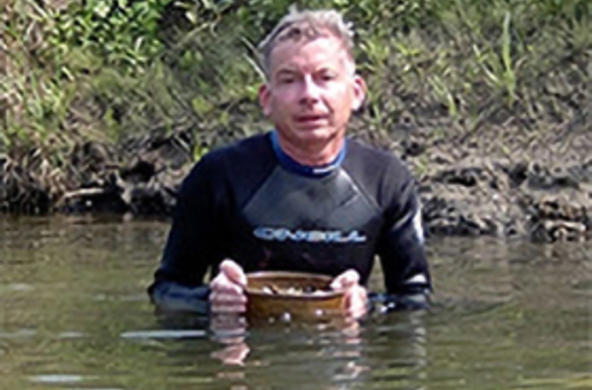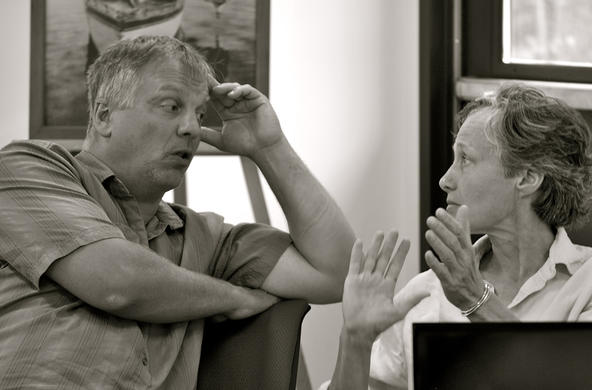Sending a robotic airboat disguised as a crocodile to look for hippo poop in Kenya's Mara River sounds like a hilarious idea, but it wasn't so funny when the hippopotamus started chasing the robot.
"Just seeing that 2½-ton animal going after the boat — everyone was holding their breath," Paul Scerri, president of Platypus LLC and an associate research professor at Carnegie Mellon University's Robotics Institute, told NBC News. "It was definitely the most amazing thing I've seen."
Scerri and other members of a scientific team brought Platypus' robo-boats to Kenya for three weeks in March to support a research project focusing on the Mara River's water quality. An estimated 4,000 hippos use the river as a toilet, and scientists suspect the dung is the reason why fish occasionally die in droves.
The researchers say hippo poop accumulates on the bottom of the river's pools during periods of low flow, and is flushed down the Mara when the river rises. That would cause oxygen levels to crash downstream, killing the fish. To confirm the hypothesis, scientists wanted to sample the water where the hippos hang out — but that job is much too dangerous for humans. So they sent in three remote-controlled, instrument-equipped airboats.
A local guide suggested that the hippos would tolerate the 2-foot-long, 13-pound boats better if they looked like crocodiles, and so one boat was decorated with a foam croc head and green fabric.
Most of the time, the plan worked just fine — but then there was that time when a hippo gave chase. Fortunately for the robo-boat, the hippo stumbled into deep water about 30 seconds into the chase, providing an opportunity for escape. (The climax comes at about the 1:30 mark in this robo-croco-cam video.)
The researchers were fortunate in another sense: They gathered enough data to measure the depth of the river, the depth of the fecal deposits and the water quality before and after a flushing event. If it turns out that the poop is the problem, then conservationists can start drawing up strategies to reduce the impact on the fish downstream.
"What we can give them is one more data point," Scerri said. And they can honestly say that no robo-crocodiles — and no hippos — were harmed during the making of this research project.
The Mara River project involved researchers Amanda Subalusky, Christopher Dutton and David Post of Yale University, plus Emma Rosi-Marshall from the Cary Institute of Ecosystem Studies. Platypus participants included Paul Scarri as well as Christopher Tomaszewski, Abhinav Valada and John Scerri.
The boat deployment was sponsored in part by Carnegie Mellon's Project Olympus. Subalusky, Dutton, Post, and Rosi-Marshall are supported by the National Geographic Society, Switzer Fellowship, World Wildlife Fund, National Science Foundation and Yale. For more about the adventure, check out the reports from Carnegie Mellon University and Environmental Monitor.






